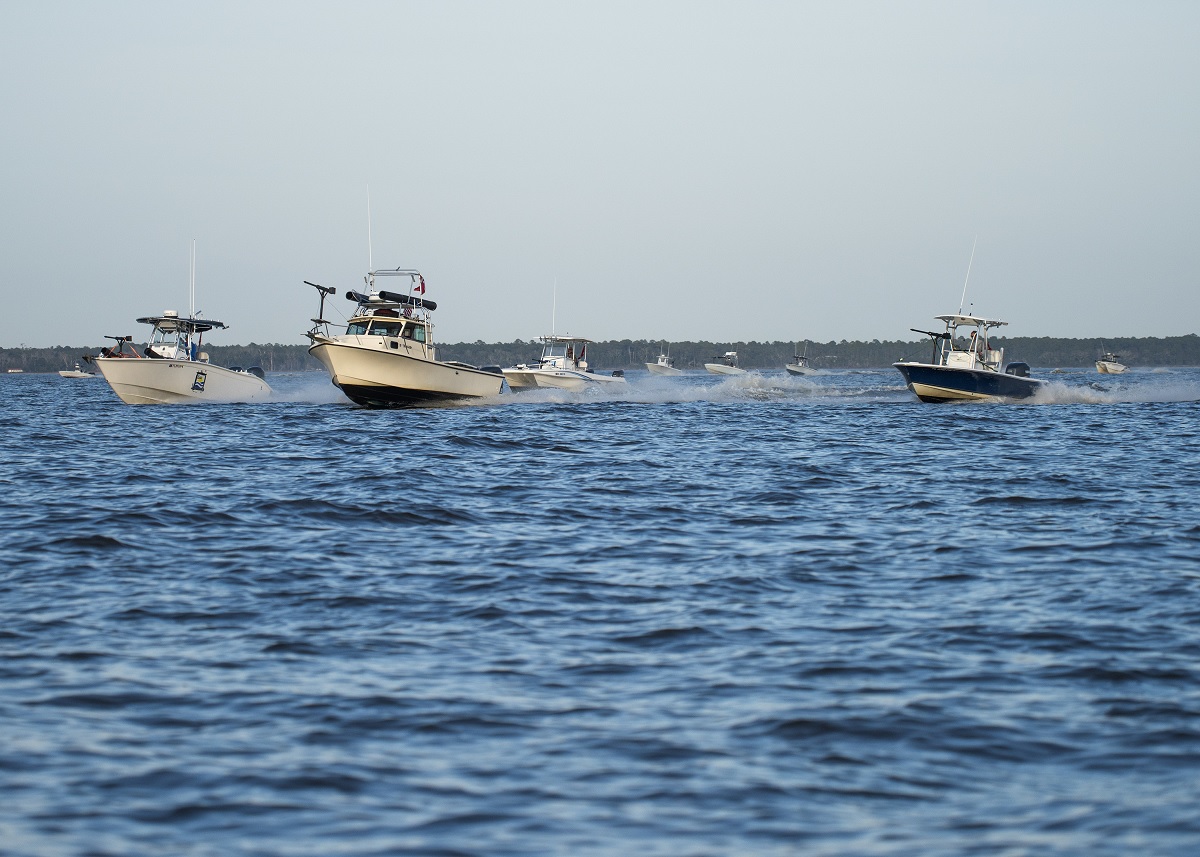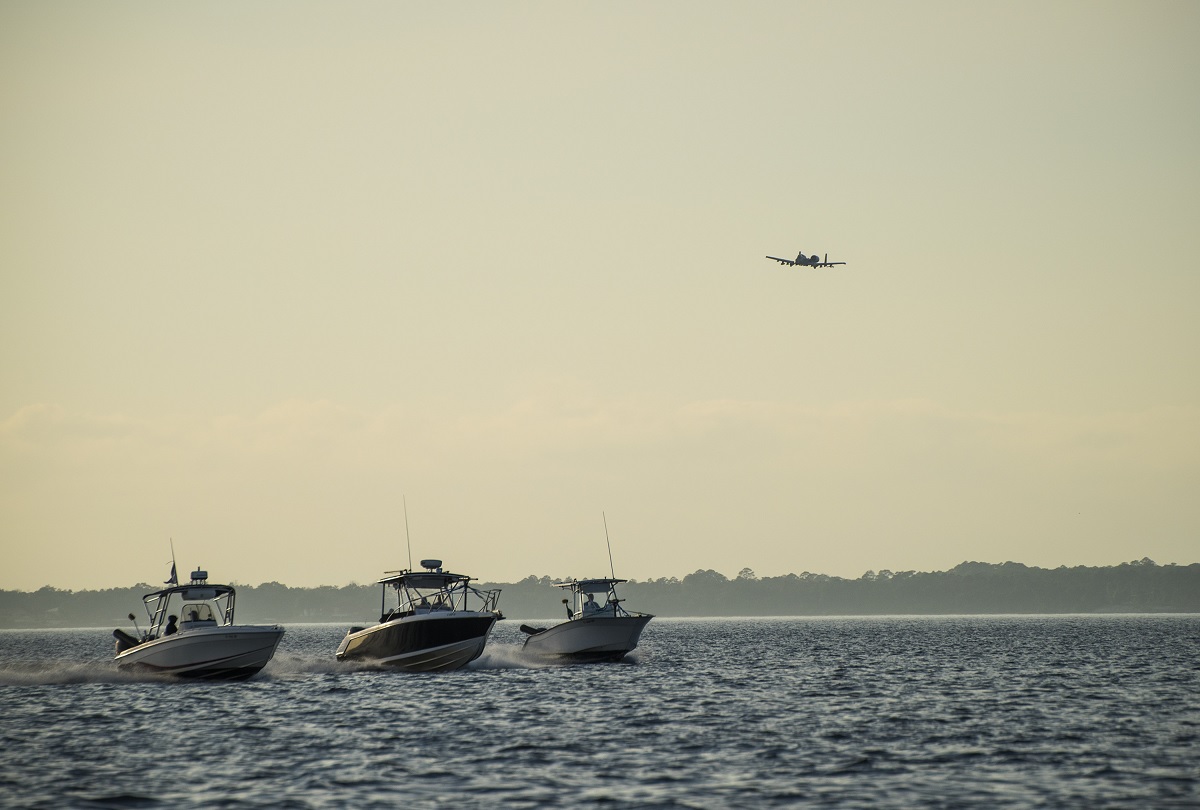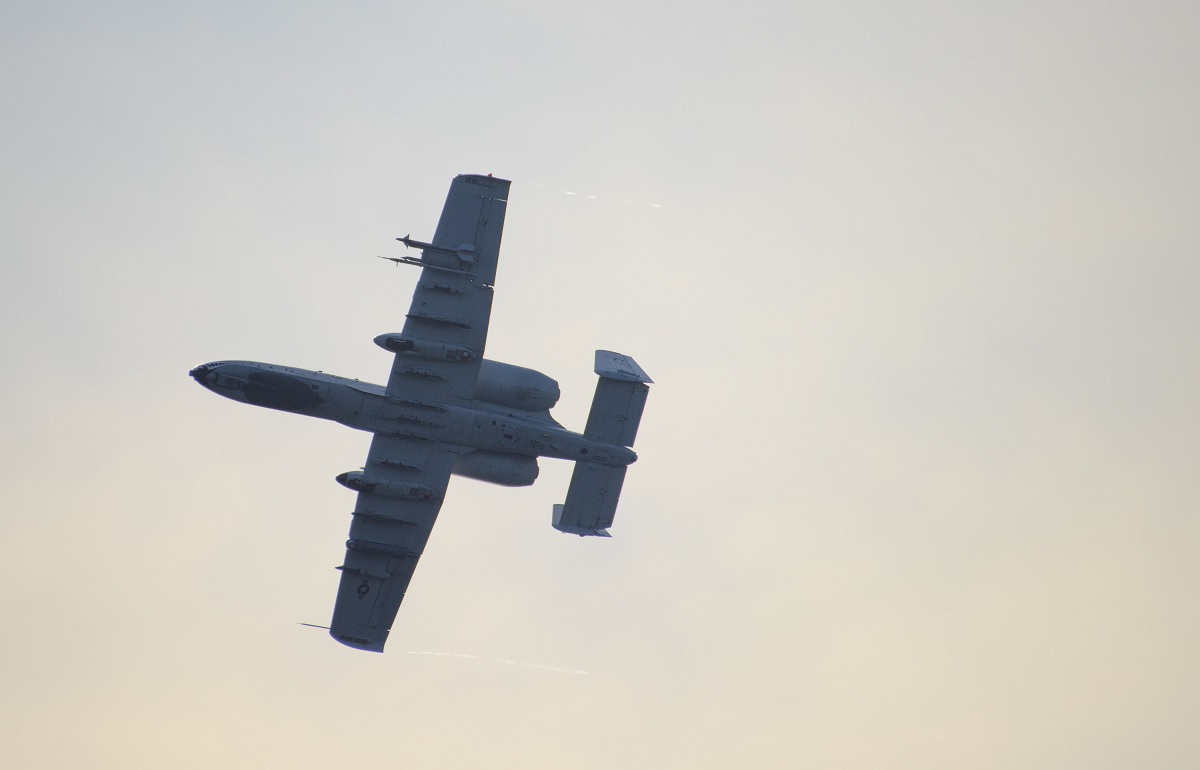A-10 pilots fired inert training rounds of 30-millimeter caliber at unmanned boats positioned in the Gulf of Mexico to make training more realistic
On February 6, 2017, fishing boats armed with improvised machine guns and weapons to mimic “pirate boats” swarmed the region near the Midbay Bridge between Niceville and Destin.
This scenario was from Combat Hammer, an annual multi-service exercise that the 86th Fighter Weapons Squadron (FWS) conducts to assess weapon systems.
The 96th Operations Support Squadron hired about 35 local boat captains and mariners to practice realistic swarm attack formation maneuvers in the Choctawhatchee Bay while twin-engine jets, multi-role fighter jets, Navy helicopters, and Canadian F-18s targeted them from above to practice dummy “real-time kills.”

“We evaluate precision-guided munitions against realistic targets with realistic enemy defenses,” said Lt. Col. Sean Neitzke, 86th FWS commander. “There are plenty of places in the world where low-tech adversaries can mount 50-caliber machine guns and rocket launchers on small boats for use against us. They could also use other types of shoulder-launched weapons, all of which could be a threat to American assets.”
During the morning portion of the test, A-10 pilots fired inert 30-millimeter training rounds at unmanned boats stationed in the Gulf of Mexico to make training more realistic. The pilots also launched 500-pound GBU-12 laser-guided bombs, 2,000-pound Guided Bomb Unit-10 inert bombs, and GBU-54 laser-guided Joint Direct Attack Munitions (JDAMs).
Over 62 bomb drops were accomplished over the Eglin range during the training week. Units from the 96th Range Group acquire the data from the drops. Within the Central Control Facility at Eglin, the 96th Range Control Squadron (RNCS) provides real-time mission control and data processing capabilities for the Weapon System Evaluation Program (WSEP) exercise (CCF).

“The 96th RNCS CCF receives data from aircraft, weapons, targets, and a multitude of other range sensors and combines that information to provide full situational awareness to the WSEP engineers,” said Stan Pitchford, Director, 96th Range Control Squadron. “This allows them to make real-time decisions on the performance of various weapon systems.”
Digital data streams are gathered by ground telemetry facilities run by the 96th RNCS using telemetry kits placed on weapons. After being converted into information (such as targeting coordinates) and being sent across a fiber optic cable to the 96th RNCS CCF, the data is then made available to the WSEP customer for analysis. In order to improve situational awareness, the CCF also receives high-speed video and radar data from the 96th RNSS.
“At the end of the exercise, we package all of the mission data and deliver it to the WSEP customer. In a nutshell, we provide WSEP with decision quality data, so they can ensure the employment of the weapons work as intended before they go downrange,” said Pitchford.
This information evaluates the weapons’ suitability, dependability, accuracy, and maintenanceability. In order to help senior Air Force officials, combatant commanders, and operational planners make judgments about warfighter capacity, analysts have broken down those findings. Additionally, when munitions shortcomings are found, the data is used to support financing, training requests, hardware, and software requests.
According to Neitzke, the detection of flaws enables the Air Force to address any problems in the Air Force inventory prior to the deployment of the weapons to operational hotspots. The evaluation exercise also offers and improves operationally realistic training for the participating units and the squadron’s pilots and maintainers.

Combat Hammer is frequently the first opportunity aircrew men get to discharge a certain kind of munition from their aircraft. The objective is to give pilots who have never fired a weapon before the opportunity to get in the cockpit and drop a new weapon or a weapon that is often unavailable at their home base.
“We strive for 50 percent first-time shooters in the cockpit,” said Neitzke. “We get an allocation of more unique munitions than an operational fighter squadron typically gets at their home station.”
The 86th FWS Airmen examine every part of the weapons from the point of assembly to the point of impact to guarantee that the munition can be taken off the rack and used successfully in battle tomorrow.
“We want to ensure Americans have the best hardware and software possible. Our goal is to find problems, and fix them, to provide our warfighters the best capabilities we can,” said Neitzke. “We want to protect them and help them be more effective in accomplishing their mission.”

Story by By Ilka Cole, Team Eglin Public Affairs; Photo by Ilka Cole / U.S. Air Force

